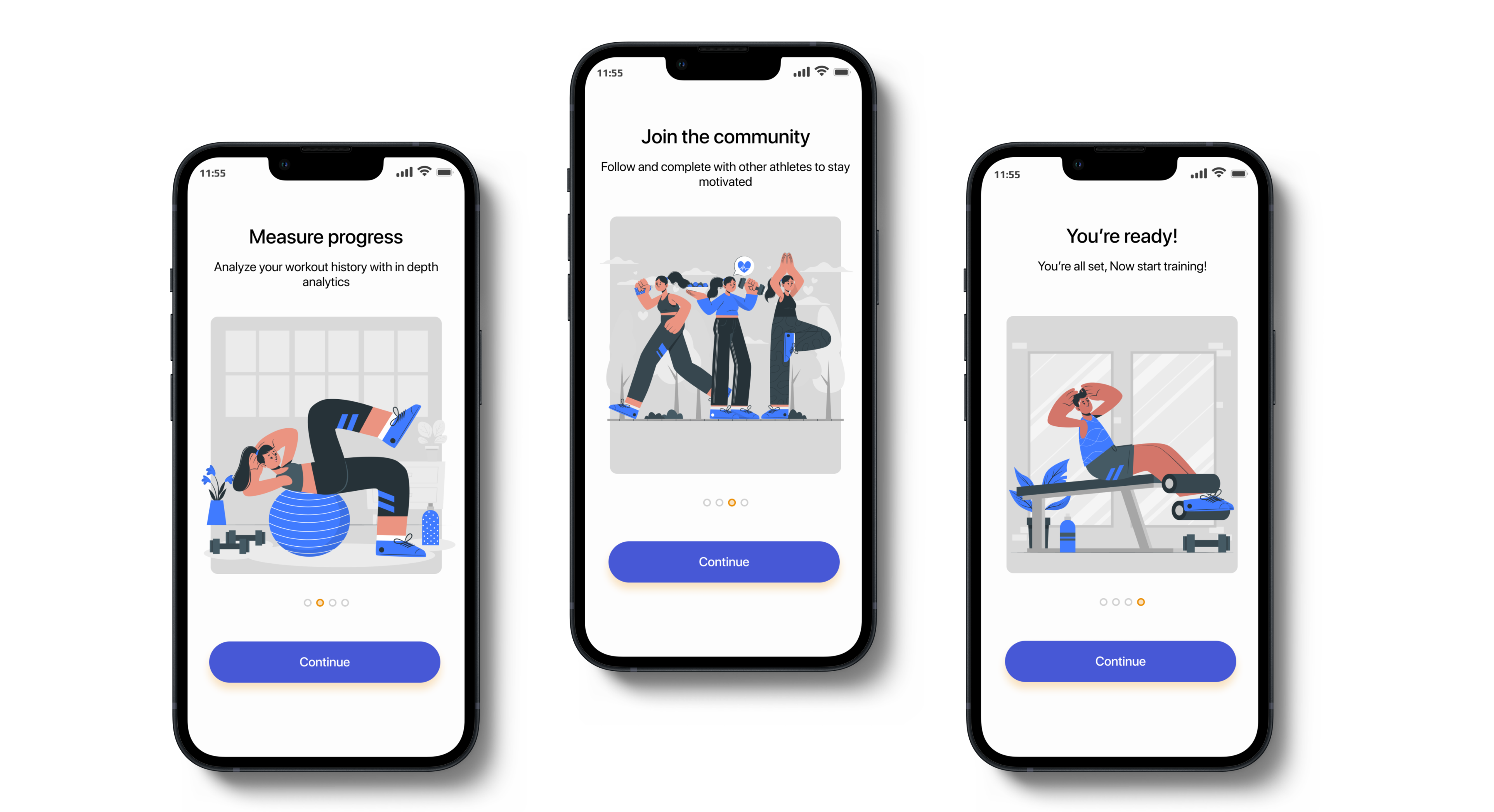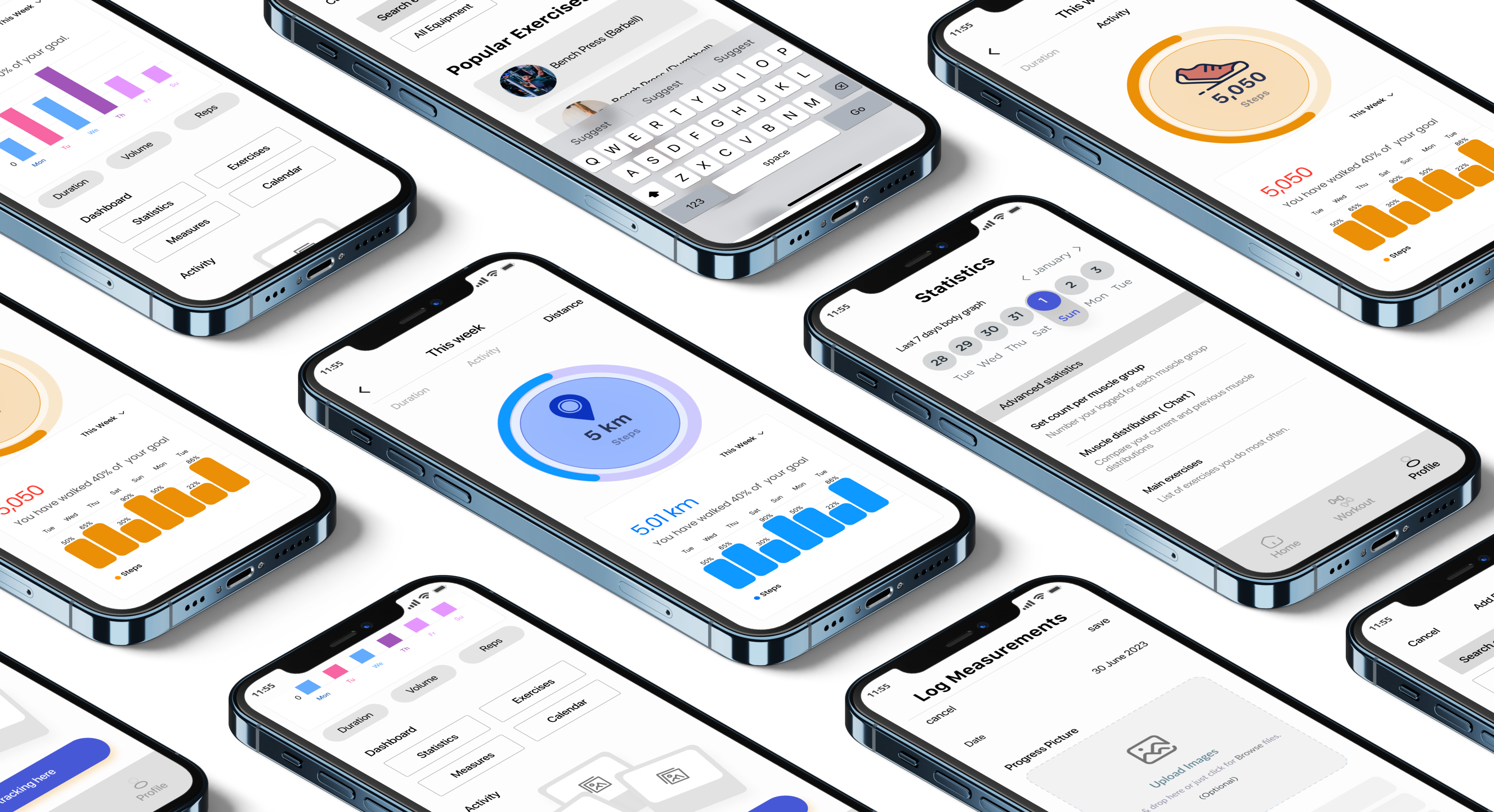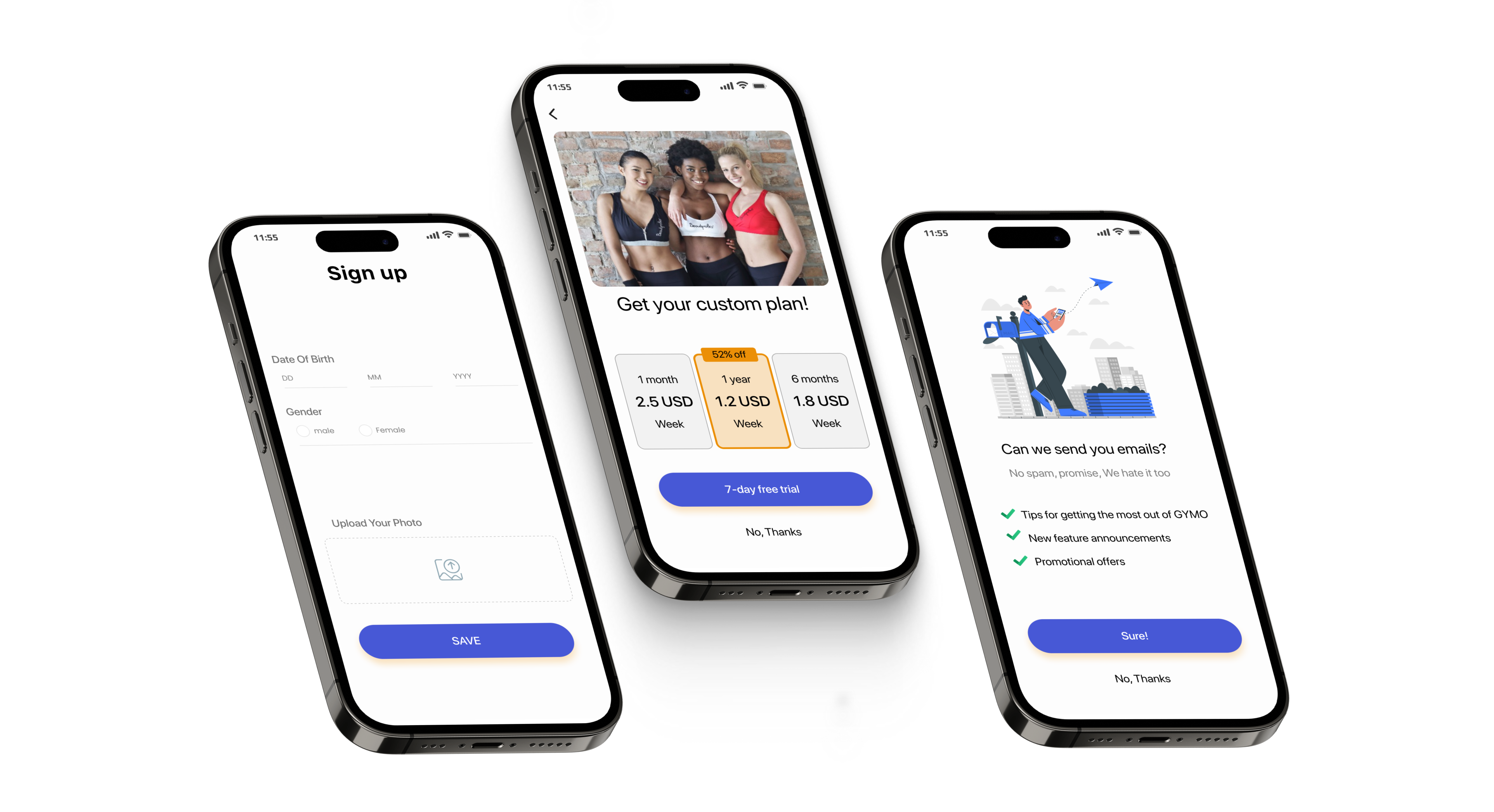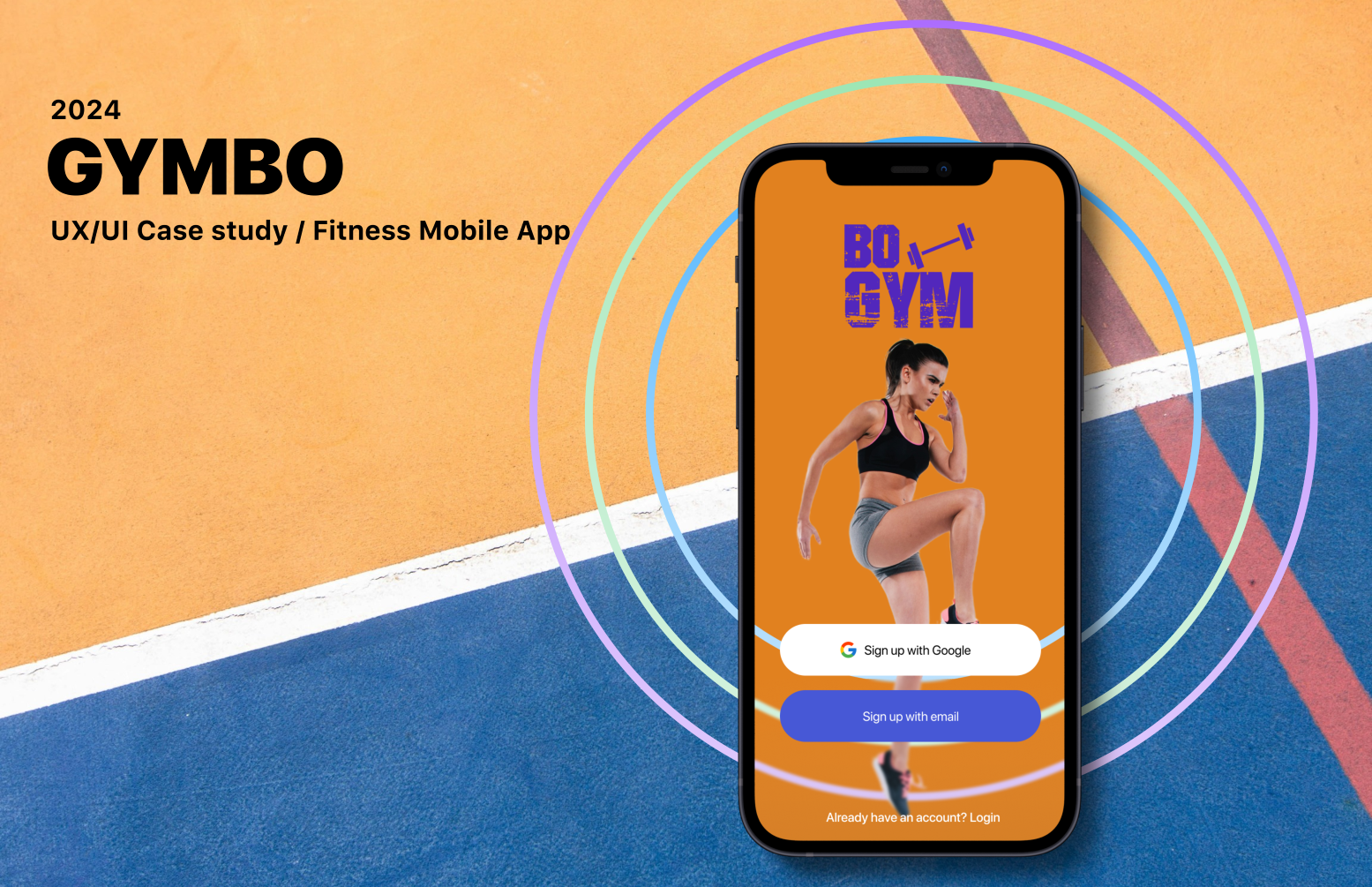



GYMBO expertly tailors each fitness journey, transforming routines into personalized paths to success. I customize exercises, meticulously track progress, closely monitor all body changes, and make every specific goal achievable. I acted as the UX/UI Designer on this project and used Figma to create screens for mobile.
Encourage users to use fitness trackers as a general guide rather than an absolute measure. Combine tracker data with other methods of monitoring progress, such as regular fitness assessments or consultations with fitness professionals. This holistic approach can provide a more accurate picture of one's fitness progress.
Educate users on the importance of a balanced fitness regimen that includes flexibility, strength training, and cardiovascular health. Encourage Users to set diverse goals that cover all aspects of fitness, and use the fitness tracker as one of several tools to track progress.
Fitness trackers have improved over the years, but there can still be discrepancies in measurements like step counts or calorie burn estimates. This can lead users to make decisions based on potentially inaccurate data.
Striving to meet preset numeric goals on fitness trackers can sometimes lead to overexertion or neglect of other important aspects of fitness, such as flexibility and muscle strength.
By exploring other fitness apps, I pinpoint crucial features that guide the enhancement of GYMBO, integrating functionalities that please the users and promote regular use, enriching their health and making a profound impact on their wellness journey.
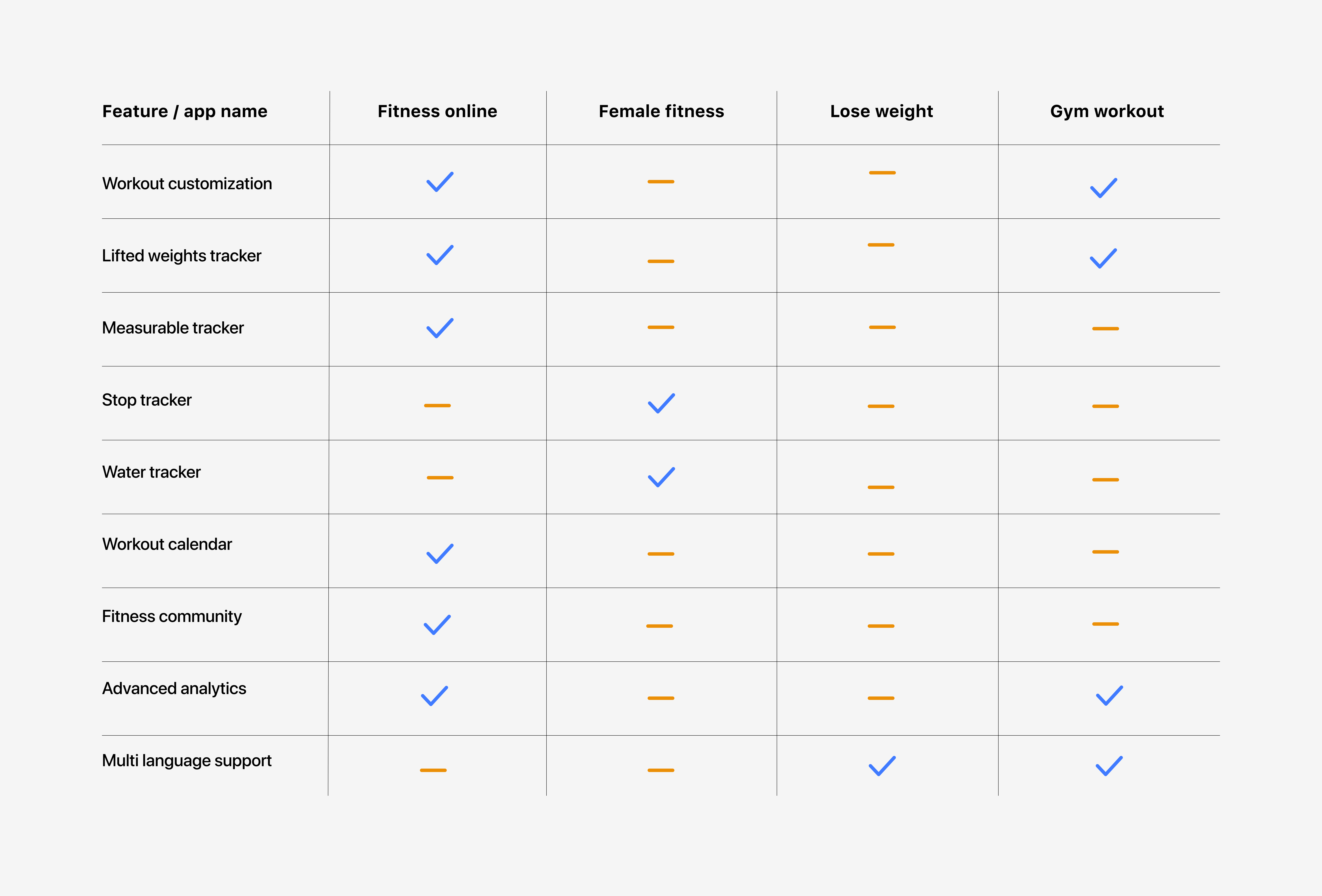
As part of quantitative research, I conducted a survey, which helped me learn more about the target group and better understand users' behavior and attitudes, Categorize the results in a chart.
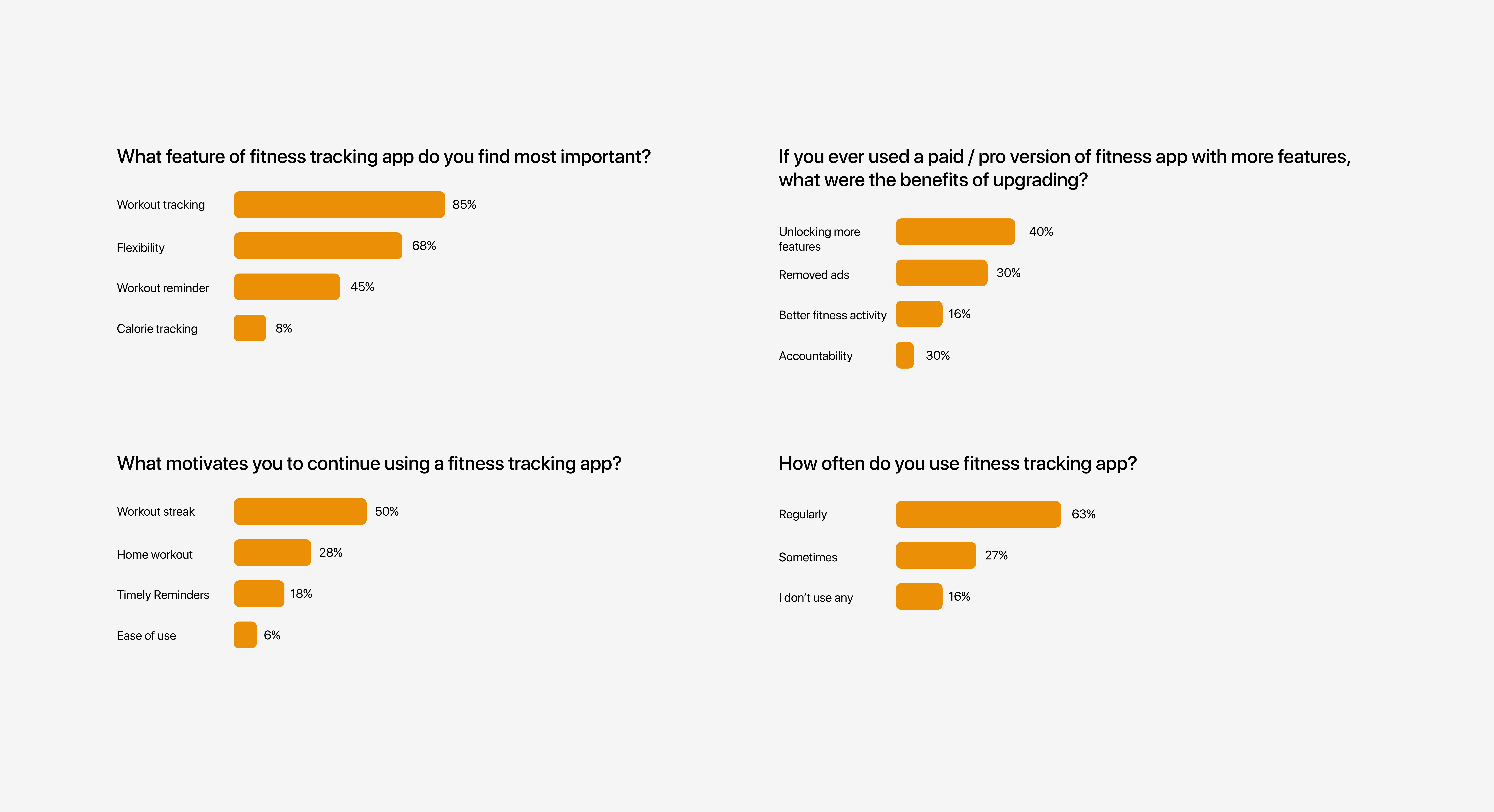
Based qualitative research I have created user personas representing target user groups.
Empathy maps help me understand and identify the feelings, needs, and goals of users like William, Sarah, and Jane more effectively. By visualizing their experiences, I can gain valuable insights into their emotions and behaviors. This comprehensive understanding is crucial for developing user-centered designs that truly resonate with them.
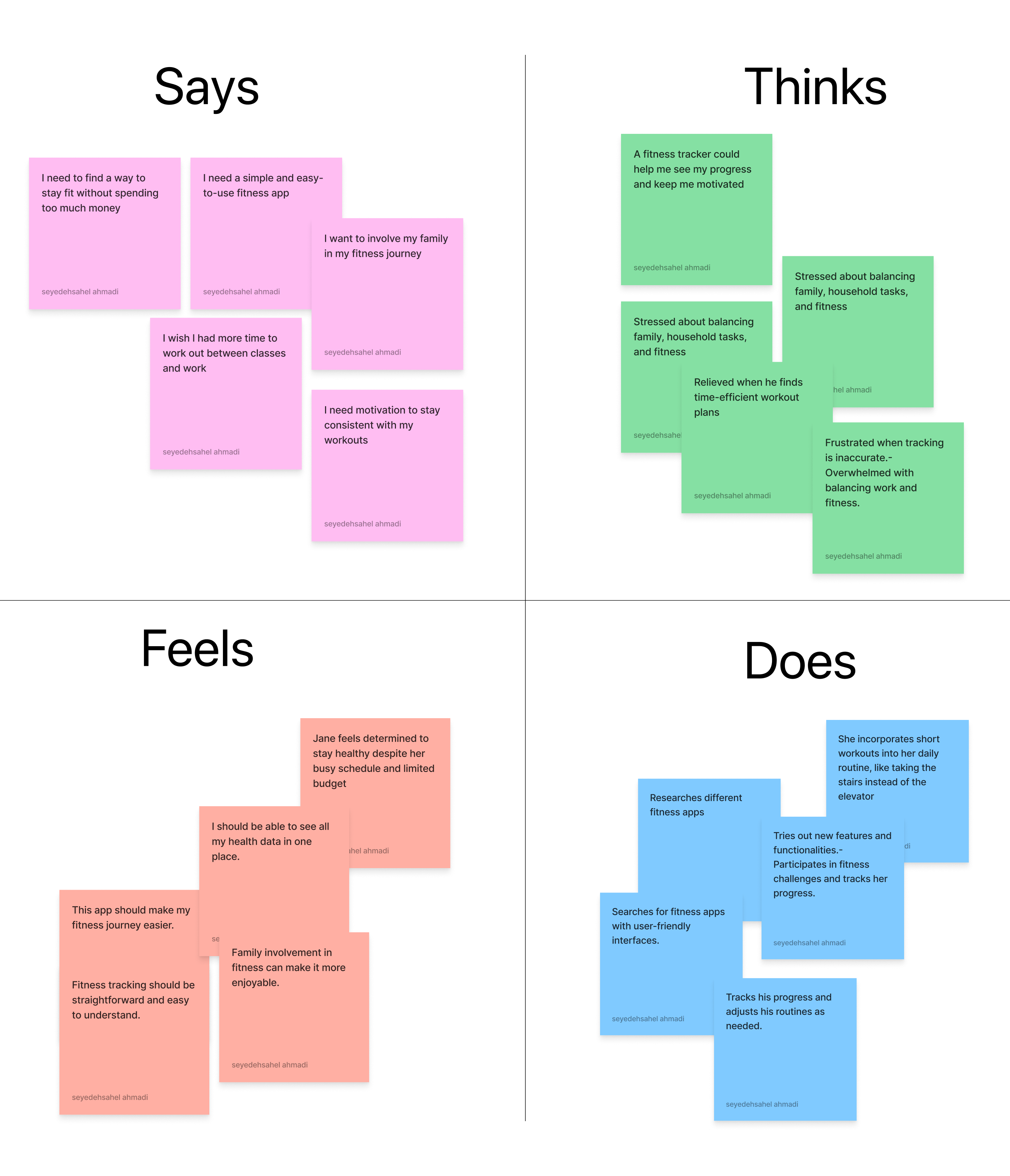
I create user flow diagrams that enhance the user experience by mapping out the most efficient and intuitive paths for users to follow. These diagrams help in identifying and addressing pain points for different user groups, such as William, Sarah, and Jane, ensuring a seamless and satisfying interaction with the product.
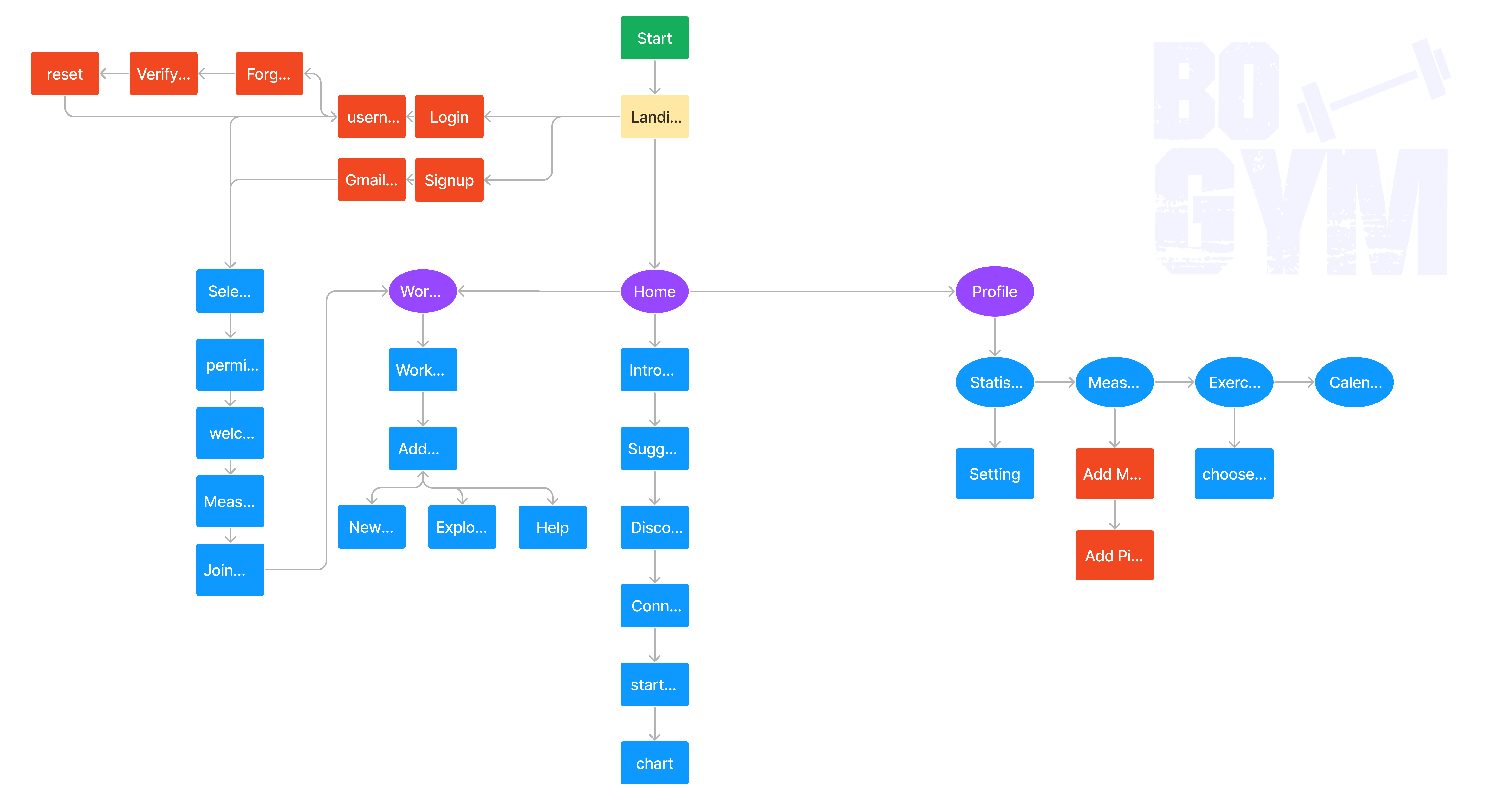
After that, I create low-fidelity wireframes in Sketch, which provide a clear and straightforward representation of the app's layout and functionality. By focusing on the core elements and user interactions, I can quickly validate design concepts and ensure they meet the users' needs.
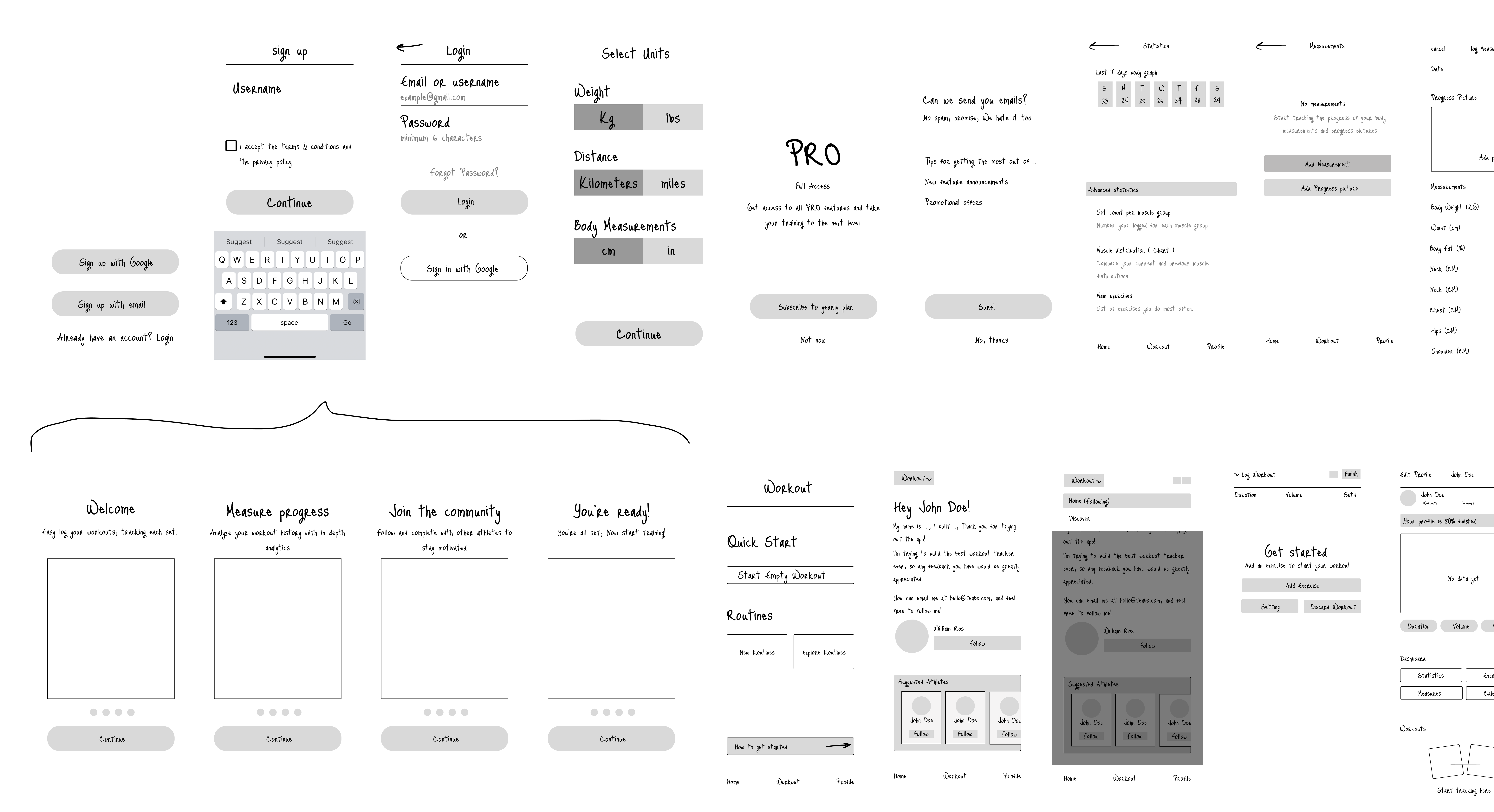
Using Figma, I placed a 12-column grid onto the mobile screens to help organize the content. This helped propel the wireframes from low to high-fidelity.

It included detailed specifications on typography, color schemes, icons, and spacing, ensuring consistency throughout the design process. As I moved forward with the high-fidelity prototype, I constantly referred back to the Style Guide to maintain a cohesive and visually appealing interface.
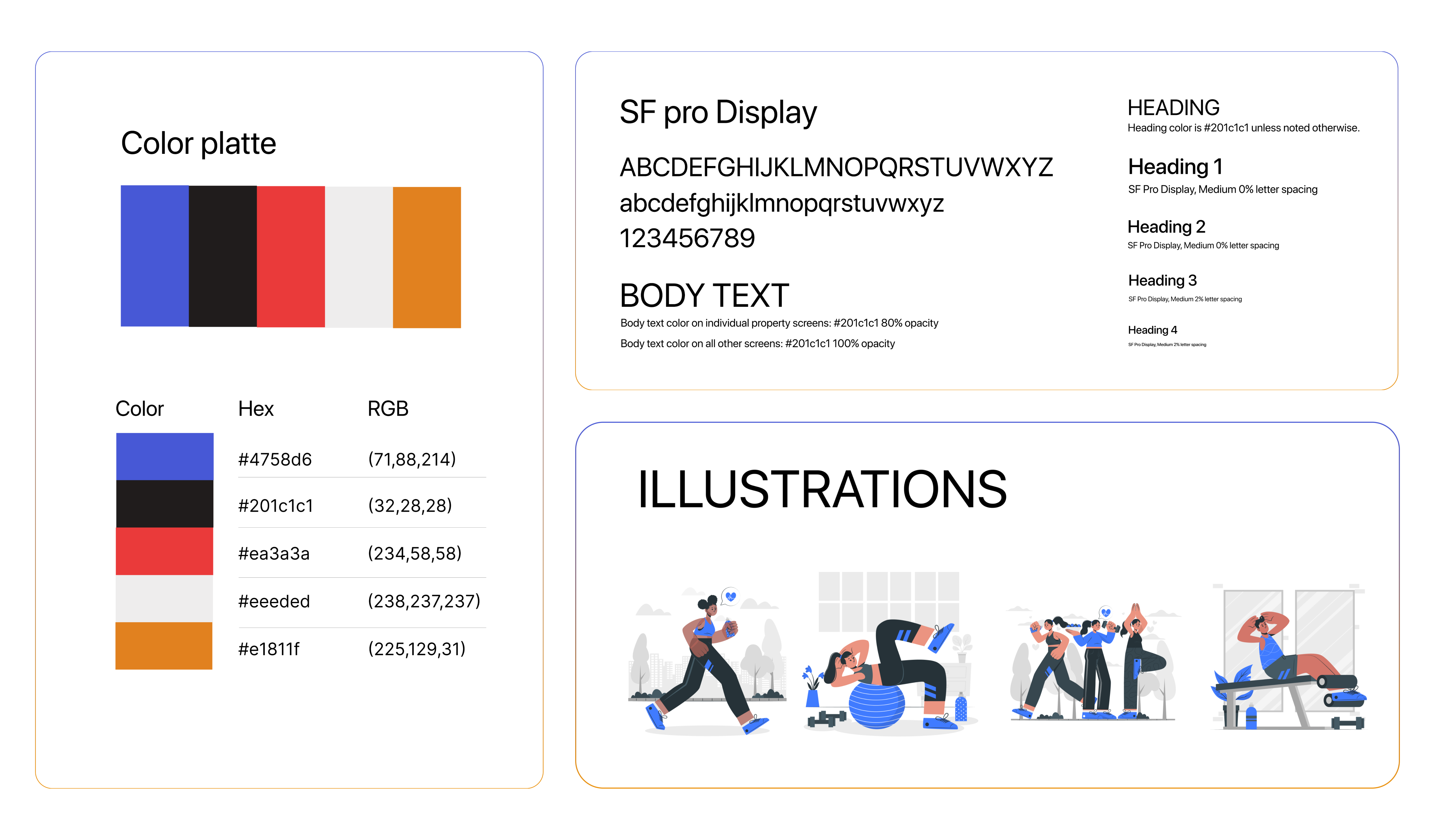
Finally, using workout tracker applications, like all apps, has its advantages and disadvantages. While relying on numbers and figures might sometimes be unbelievable for some people, the benefits generally outweigh the drawbacks. These apps can create more motivation for individuals to exercise. Additionally, knowing the number of calories burned and consumed, even approximately, can be highly beneficial for health and increasing motivation.
